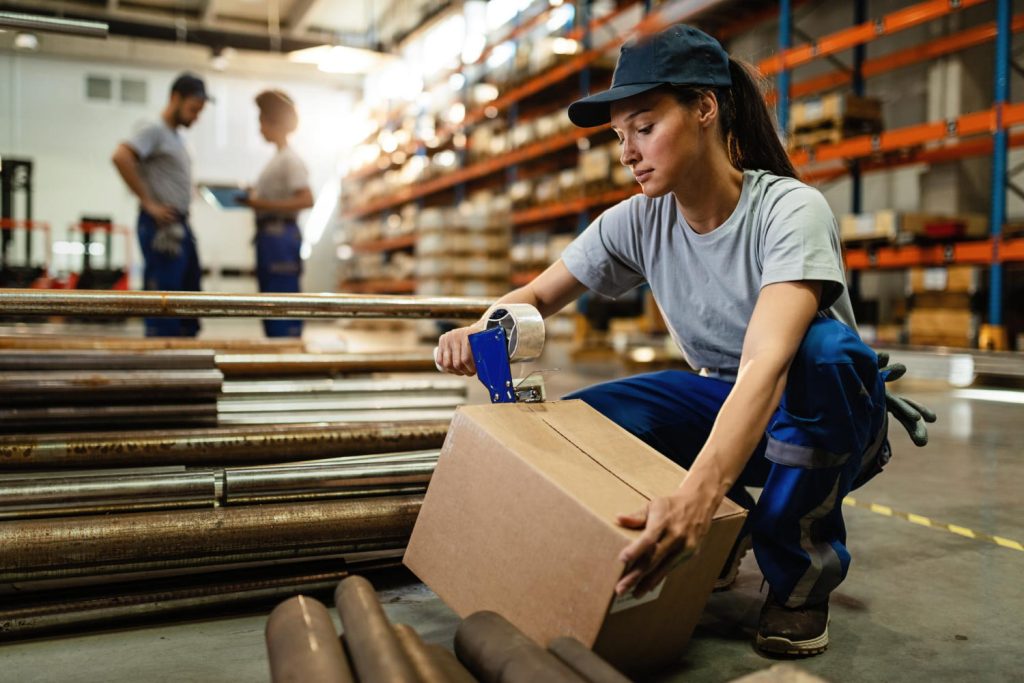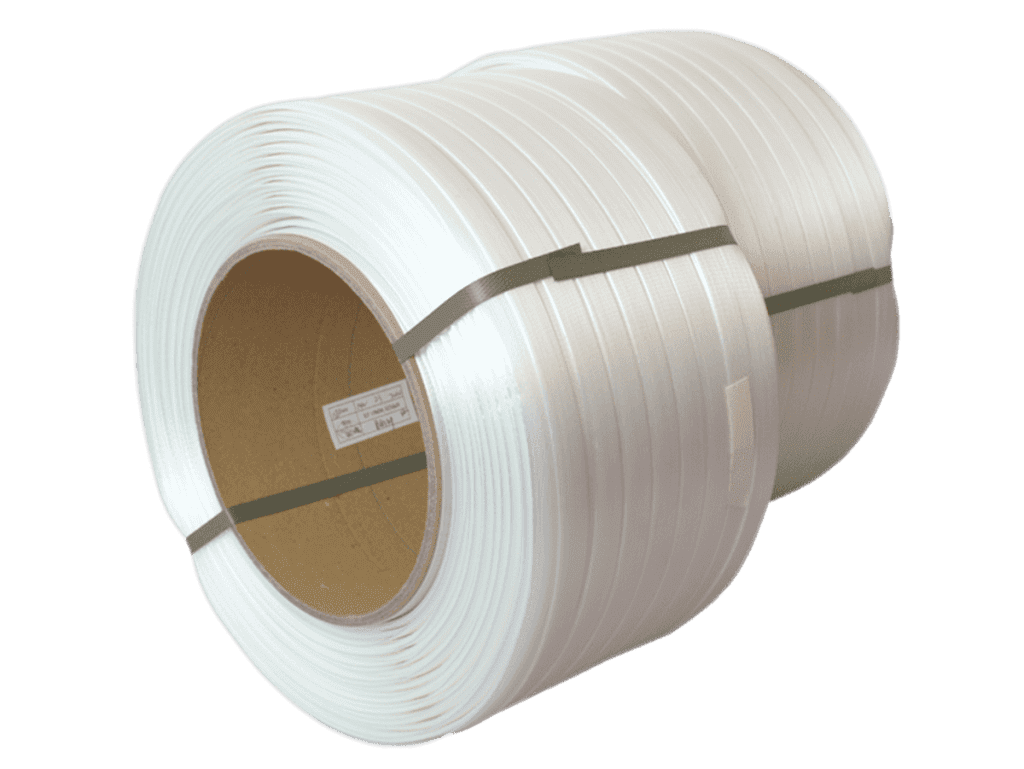Ensuring Safety and Quality in Supply Chains
Industrial packaging is indispensable for safeguarding and showcasing products acting as guardians to guarantee their integrity. But beyond this, what exactly is the packaging, and what is its true objective?
We can deny that it is a vital tool in the supply chain. Its chief function is to ensure the product’s safety during transportation and storage. Still, it also fulfills the objective of presenting the product as attractive to the customer. This dual goal makes packaging a critical factor for the success of any product.
Choosing the proper packaging can generate customer satisfaction and enhance logistics efficiency. In this sense, the packaging becomes a strategic ally, safeguarding the products arriving in optimal conditions at the customer’s hands.
Throughout this article, we explore the relevance of making informed and correct decisions regarding packaging. It involves considering several aspects, including the type of material used, the functionality and design of the packaging, and the specific needs of the product to be packaged.
What is industrial packaging?
Industrial packaging plays a crucial role in many industries, especially in product manufacturing and distribution. It refers to the range of materials and processes used to protect, identify, contain, and handle products throughout storage, transport, and sale.
Industrial packaging provides a physical layer of product safety and fulfills several vital functions in the supply chain flow. Some of these functions embrace:
● Protection: The primary purpose of industrial packaging is to safeguard products while they are transported and stored. It involves preventing physical damage, such as bumps and drops, and protecting against environmental factors like moisture, heat, and light.
● Conservation: Some kinds are intended to preserve the products’ quality and useful life, particularly in food and perishable products.
● Information: Packaging is also a communication tool. For example, it can inform about the product features, directions for use, precautions, ingredients or components, and other pertinent details.
● Marketing: Industrial packaging design can contribute to brand perception and product appeal, influencing customers’ purchasing decisions.
● Facilitation of handling and transport: Packaging helps to improve the efficiency of transport and treatment of products, facilitating their storage, stacking, and mobility.
Depending on the product’s specific needs and supply chain, industrial packaging can take diverse shapes, sizes, and materials. It contains cardboard boxes, corners, strapping, bubbles, polyfoam, pallets, drums, bags, and other containers.
More than a wrap
Industrial packaging is more than just a wrapper; It is an integral tool that facilitates the proper functioning of different industrial sectors. Let’s see how it is pertinent in some key sectors: food, pharmaceutical, and electronics.
Food Sector
In the food sector, industrial packaging guarantees product safety, quality, and freshness. Packaging protects food from environmental contaminants, such as air, moisture, and bacteria, preserving its nutritional value and preventing spoilage.
Some types of packaging can even extend the shelf life of food through technologies such as modified atmosphere. In addition, the packaging facilitates food transport over long distances, letting the worldwide circulation of food products.
Pharmaceutical sector
Proper packaging is indispensable for safeguarding and distributing medications in the pharmaceutical sector. To guarantee the safety and effectiveness of drugs, pharmaceutical packaging must adhere to rigorous standards. They must tamper resistance, protect drugs from environmental factors, and provide an effective barrier against contamination.
In addition, pharmaceutical packaging often includes exceptional features, such as security seals, child-resistant opening devices, and labels with detailed product information.
Electronic Industry
In the electronics sector, industrial packaging is critical to protect sensitive components during transport and storage. Electronic devices and their features can be highly delicate and susceptible to damage from impact, vibration, static electricity, and moisture.
Therefore, packaging often involves insulating, antistatic, and shock-absorbent materials. Furthermore, it may consist of compartments or supports to keep components in place and avoid movement during transportation.
Considerations for choosing the correct packaging
Selecting the proper packaging is a strategic task that requires careful consideration of the unique characteristics of each product. Let’s look at some of the key considerations:
Kind of product
It is a central aspect since the product’s physical properties will determine the need for protection and transport. Relevant characteristics may include size, shape, brittleness, weight, and other product particulars.
● Oversized or heavy products: Bulky or heavy items require strong packaging to support the load without sagging. In this context, double-walled wooden or cardboard boxes are usually preferred, offering the necessary durability for transit and handling.
● Fragile products: Packaging with additional protections is essential for those products susceptible to damage, such as glassware or electronic components. Cushioning materials, such as molded foam or bubble wrap, can be incorporated to absorb shock and minimize the risk of damage during shipping.
● Perishables: Fresh foods and other products that can degrade quickly require specialized packaging solutions. It may involve packaging with a controlled atmosphere, refrigeration, or a combination of both, to maintain freshness and prevent spoilage during storage and transport.
● Chemical or dangerous products: Products that are flammable, corrosive, explosive, or toxic require special packaging that complies with safety and transport regulations. Packaging for these products must be capable of safely containing the product, even under adverse conditions, and marked with the appropriate hazard labels.
● High-value items: Expensive items, such as jewelry, high-end electronics, or art, may require packaging that offers additional security. It can include safes, sealed packaging, or even tracking systems to help prevent theft or loss.
● Temperature-sensitive products: Some products, such as certain medicines or foods, may need to be kept at a specific temperature during storage and transport. In these cases, insulated or refrigerated packaging can maintain the correct temperature.
Each product type has different packaging needs and will require a solution specifically adapted to its characteristics. Careful choice of packaging protects the product and can also improve supply chain efficiency and the end-customer experience.

Protection needs
Product protection needs are another essential factor in the choice of packaging. Depending on the product’s characteristics and the risks associated with its storage and transport, selecting packaging that offers resistance to moisture, heat, light, impact, or other environmental factors may be necessary.
Each product has particular protection requirements. Assessing these needs is essential to selecting adequate strength and security packaging.
● Perishable products: These require packaging that ensures their conservation and freshness during transport and storage. Sealing materials and systems that maintain an airtight environment and allow adequate temperature control must be selected.
● Delicate products: Items of this type must be protected from impacts and vibrations that could compromise their integrity. It is advisable to use padding and protective materials, such as foams, air bubbles, or internal dividers, to ensure their stability and safety during handling and transport.
● Fragile products: They need strong and safe packaging to protect them from possible blows or falls. Heavy-duty materials, such as thicker corrugated cardboard, cushioning pads, and cushioning systems, are essential to prevent damage during handling and distribution.
● Temperature-sensitive products: Some products, such as certain foods, medicines, or chemicals, can be affected by extreme temperatures. Insulated or refrigerated packaging could be considered to maintain a constant temperature for these products.
● Products with moving or articulated parts may need additional protection to prevent them from shifting or being damaged during transport. Fasteners such as molded foams or internal partitions can hold the pieces in place.
● Bulk or liquid products may require airtight packaging to prevent leaks or spills. Containers with sealed lids or zip-seal bags may be suitable for these products.
Evaluating the protection needs of each product in detail is essential to select the appropriate packaging, thus guaranteeing the resistance and safety required to keep them in optimal conditions until their final destination.
Cost and logistics efficiency
Logistic cost and efficiency are essential components when selecting the ideal packaging. Finding a balance between ensuring product integrity and controlling packaging costs is critical to maintaining profitability without compromising product quality. The packaging design should also facilitate handling, storage, and transport to optimize the supply chain. Some points to consider include:
● Standardized or modular packaging: The use of packaging of this type can significantly improve logistics efficiency. By having uniform or compatible dimensions, these packages allow optimal use of space during storage and transport. It, in turn, can result in reduced operating costs.
● Light but resistant materials: The choice of these materials for packaging can help to minimize transportation costs since weight is a critical factor in determining these costs. Additionally, these materials can help reduce the environmental impact of packaging.
● Optimization of packaging for handling: A design that facilitates the loading, unloading, and handling of the product can increase the efficiency of the logistics chain. It may include features such as built-in handles, reinforced corners, or shapes that allow for secure stacking.
Reliable providers:
Choosing a reputable and reliable supplier is a factor when selecting the proper packaging. These suppliers must be able to guarantee the high quality of their products, meet delivery deadlines, adapt to changing needs, and provide advice and technical support.
Additional considerations include your commitment to sustainable and ethical practices and your ability to innovate and adapt to emerging packaging industry trends. Some points to consider are:
● Product quality and consistency: A reliable supplier must be able to offer high-quality products and ensure the consistency of its offer. It implies providing packaging that meets the required specifications consistently and reliably.
● Delivery reliability: Suppliers must be able to meet agreed delivery times, ensuring that products are available when needed. Delays can disrupt the supply chain and adversely affect business operations.
● Technical support and advice: A good vendor should be able to provide support and advice to help select and use their products in the most effective way possible. It may include assistance with packaging design or recommending solutions for specific needs.
● Commitment to sustainability and ethics: Suppliers who commit to sustainability and ethical practices can add significant value. It may include using recycled or biodegradable materials, minimizing waste, or ensuring fair working conditions.
● Innovation and adaptability: The packaging industry constantly evolves, and suppliers that can innovate and adapt to new trends can offer more effective and modern solutions.
Work only with the best: BMS.
Our strategic approach to packaging helps optimize resources, minimize risk, and deliver a seamless delivery experience. We have the most advanced knowledge and innovative tools to create intelligent packaging and offer the best solutions. Therefore, do not hesitate to contact us if you need help with your industrial packaging. We are here to find together the perfect solution for your requirements. Contact us right now!
